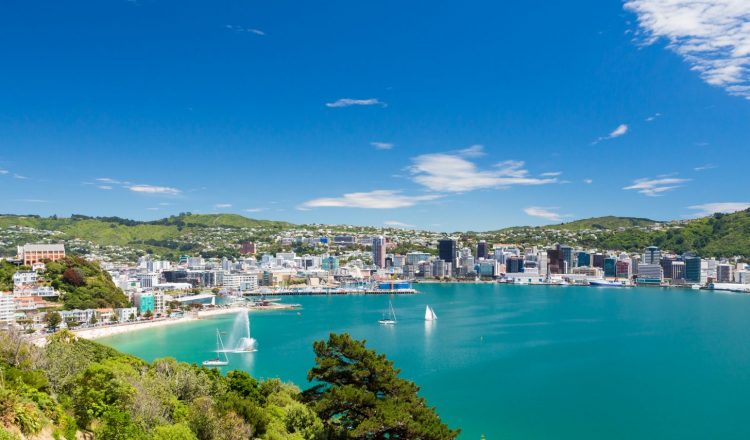Một lịch sử ngắn gọn
New Zealand là một quốc gia trẻ, về cả địa chất lẫn con người. Trên thực tế, New Zealand là nơi lớn và có thể ở được cuối cùng trên thế giới được phát hiện.
Khu định cư Maori; 1320-1350
Đầu tiên đến là tổ tiên của Māori. Những người định cư đầu tiên có lẽ đến từ Polynesia từ năm 1200 đến năm 1300 sau Công nguyên. Họ phát hiện ra New Zealand khi họ khám phá Thái Bình Dương, điều hướng bằng các dòng hải lưu và gió và các ngôi sao. Trong một số truyền thống, hoa tiêu ghi có với khám phá New Zealand là Kupe.
Những người châu Âu đầu tiên; 1642
Người Hà Lan – Người châu Âu đầu tiên đến New Zealand là nhà thám hiểm người Hà Lan Abel Tasman vào năm 1642. Đó là cách chúng tôi có tên tiếng Hà Lan – từ một nhà làm bản đồ người Hà Lan, người đầu tiên gọi chúng tôi là Nieuw Zeeland.
Anh và Pháp – Một thời gian dài đáng ngạc nhiên trôi qua – 127 năm – trước khi New Zealand được thăm bởi một người châu Âu khác, Thuyền trưởng James Cook. Ông đến năm 1769 trong chuyến đầu tiên trong ba chuyến đi. Những người đánh cá voi và nhà niêm phong châu Âu bắt đầu thăm thường xuyên và sau đó đến các nhà buôn bán. Đến những năm 1830, chính phủ Anh đang bị áp lực để kiềm chế tình trạng vô luật pháp trong nước và cũng để trước khi người Pháp đang xem xét New Zealand là một thuộc địa tiềm năng.
Hiệp ước Waitangi ký kết; 1840
Cuối cùng, tại Waitangi vào ngày 6 tháng 2 năm 1840, William Hobson, Thống đốc đầu tiên của New Zealand, mời tập hợp các thủ lĩnh Māori để ký một hiệp ước với Vương miện Anh.Hiệp ước được thực hiện khắp đất nước, xa về phía nam đến eo biển Foveaux, vì được các thủ lĩnh địa phương ký kết. Cuối cùng, hơn 500 thủ lĩnh ký hiệp ước – nay được gọi là Hiệp ước Waitangi.
[cuộc chiến tranh New Zealand; 1845-1872
Māori chịu áp lực ngày càng tăng từ những người định cư Europen để bán đất của họ để định cư. Điều này dẫn đến xung đột và, trong thập niên 1860, chiến tranh nổ ra ở đảo Bắc. Phần lớn đất Māori đã bị tịch thu hoặc mua trong hoặc sau 20 năm chiến tranh.
Quyền đối với lao động nữ; 1893
Năm 1893, New Zealand trở thành quốc gia đầu tiên trên thế giới cấp cho tất cả phụ nữ quyền bầu cử. Lương hưu nhà nước và nhà ở nhà nước cho người lao động cũng được cung cấp đầu tiên ở New Zealand.
Thế chiến 1 và ANZACs
Hàng ngàn người New Zealand đã phục vụ, và đã chết, ở nước ngoài trong Chiến tranh thế giới thứ nhất. Cuộc đổ bộ năm 1915 tại Gallipoli ở Thổ Nhĩ Kỳ được coi là một thời đại sắp tới của đất nước chúng ta. Nó thiết lập truyền thống của ANZAC (Quân đoàn Úc và New Zealand) và một niềm tự hào về thành tích quân sự của New Zealand và mối quan hệ đặc biệt của nó với Úc.Ngày Anzac, kỷ niệm cuộc đổ bộ Gallipoli, là một ngày lễ công cộng vào ngày 25 tháng 4 mỗi năm và được đánh dấu với sự tham dự ngày càng tốt nghi lễ.
Chiến tranh thế giới 2
Quân đội New Zealand đã chiến đấu ở nước ngoài một lần nữa trong Chiến tranh thế giới thứ hai để hỗ trợ Anh Quốc. Tuy nhiên, sự sụp đổ của Singapore đã làm rung chuyển niềm tin của New Zealand rằng Anh có thể đảm bảo an ninh của đất nước. Với phần lớn lực lượng của chúng tôi bị mắc cạn một cách hiệu quả ở Ai Cập và Trung Đông, chính Hoa Kỳ đã bảo vệ New Zealand chống lại Nhật Bản trong cuộc chiến ở Thái Bình Dương.
Mở rộng thương mại và đa dạng văn hóa
Khi Anh gia nhập Cộng đồng Kinh tế Châu Âu vào năm 1973, New Zealand đã bắt đầu đa dạng hóa thương mại xuất khẩu của mình. Mất đi một thị trường quan trọng và đảm bảo cho các sản phẩm nông nghiệp của chúng tôi là một cú đánh. Sự kiện đó đã khuyến khích New Zealand mở rộng triển vọng của mình. Bây giờ chúng tôi bán hàng hóa trang trại của chúng tôi và nhiều xuất khẩu khác đến một loạt các quốc gia. Về văn hóa, chúng ta cũng đã trở nên đa dạng hơn. Riêng từ thập niên 1980, một loạt các dân tộc đã được khuyến khích định cư tại đây và New Zealand hiện nay đa văn hóa hơn nhiều.

















































